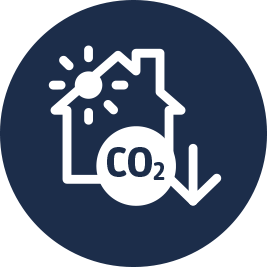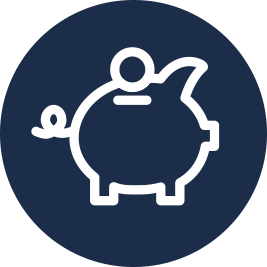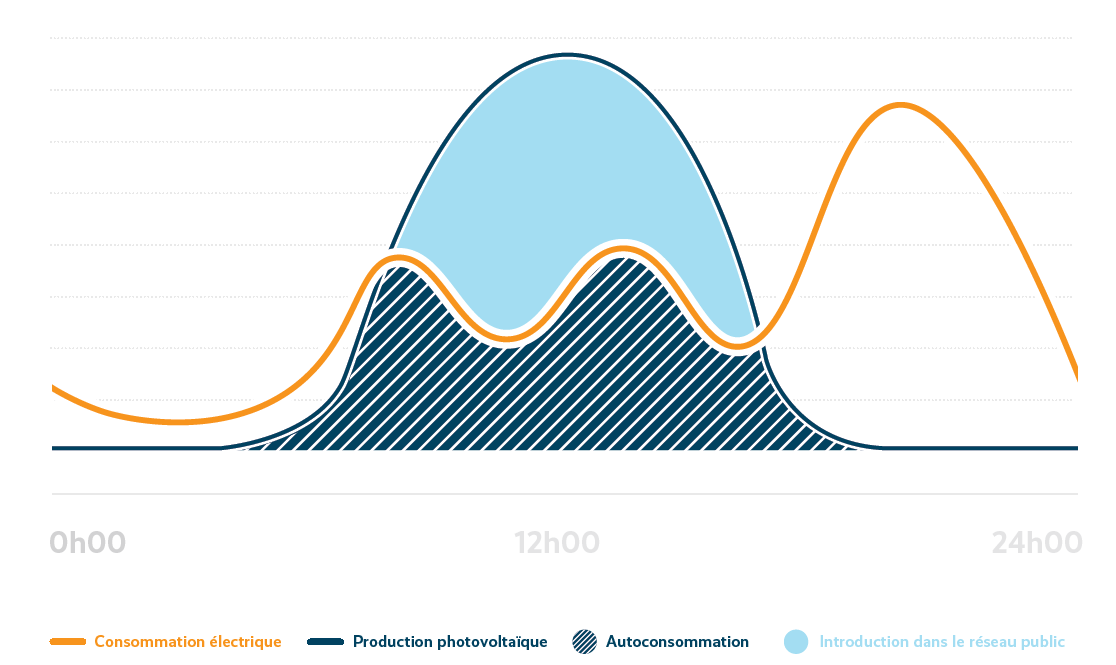Solar panels capture the sun's energy and convert it into electricity. If I have a suitable surface on my roof that is well exposed to the sun, I can use a photovoltaic installation to generate my own electricity, help protect the climate and reduce my energy costs.

I can become more autonomous and independent whilst actively participating in the energy transition.

As solar electricity does not emit CO2, I contribute to the reduction greenhouse gas emissions.

Regardless of whether I feed the electricity I produce back into the power grid, consume it myself or share it, I still save money.
I actively contribute to climate protection
Solar power is an inexhaustible, renewable, and low-carbon energy source. Unlike fossil fuels, photovoltaics emits very little CO2, helping to decarbonise our energy system and slow down global warming.
The energy payback time (the time needed for a photovoltaic installation to produce the same amount of energy as was required to manufacture it) for photovoltaic panels is generally less than two years in our region.
My choice to invest in the sun to produce electricity represents an important step in the transition to renewable energies!
I generate and consume my own electricity
If we're talking about energy transition, let's also talk about self-consumption and electricity sharing! Investing in the sun is also a great opportunity to become more self-sufficient. The energy I produce helps to cover the electricity demand in my home, meaning I can reduce the amount of electricity I need to buy from my energy supplier. I can thus consume the electricity I produce to meet my own consumption needs, for example to power my electric household appliances, my heat pump, or to charge my electric car during the day.
Illustration of energy flows for self-consumption
This graph depicts photovoltaic electricity production (dark blue curve, the ideal scenario on a cloudless day) and household electricity consumption (yellow curve). The area highlighted blue represents the amount of photovoltaic electricity consumed by the household. The surplus ( i.e. if there is more production than consumption) is then fed into the electricity grid (light blue surface area). I can simulate the self-consumed part (and the injected surplus) of my photovoltaic installation with the weshareenergy.lu software.

I can share my electricity and thus increase the profitability of my system
If I want to additionally share (i.e. sell) the electricity I generate with other users, I can do so within the framework of collective self-consumption (e.g. in an apartment building) or in a renewable energy community. The latter allows sharing or selling energy between different partners (neighbours, family, friends, ...). In a renewable energy community, members can produce, consume, store, and sell electrical energy generated by photovoltaic systems owned by the community or its members.
These concepts of collective self-consumption or a renewable energy community allow me to avoid certain electricity taxes and, where applicable, the associated costs of using the electricity grid.
Here you can find further details on the three types of self-consumption:
Individual self-consumption
Collective self-consumption
Energy community
Earning money by producing electricity
In addition to receiving an investment subsidy for my photovoltaic installation, I can benefit from the feed-in tariff for the generated electricity or sell it to an energy supplier.
There are two options for investment aid, both of which support self-consumption and feed-in to the grid.
- 20% investment subsidy: in addition to this subsidy, I receive a guaranteed feed-in tariff from the government for 15 years for the electricity fed into the grid.
- 50% investment subsidy: in addition to this subsidy, I forfeit the feed-in tariff and sign a contract with a supplier for the electricity I feed into the grid. Self-consumption is mandatory under this option.
- For quotations signed between 1.1.2023 and 30.09.2024: increase of investment aid to 62.5 %.
In both cases, I make a profit that I can use to offset my investment and free myself from the dependence on rising electricity prices.
Discover the subsidy simulator Discover the feed-in-tarrifs
Before starting my project to install photovoltaic panels, I analyse its viability and estimate the time needed to pay off my investment by consulting the solar cadastre.
